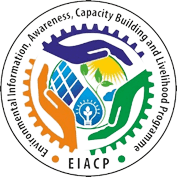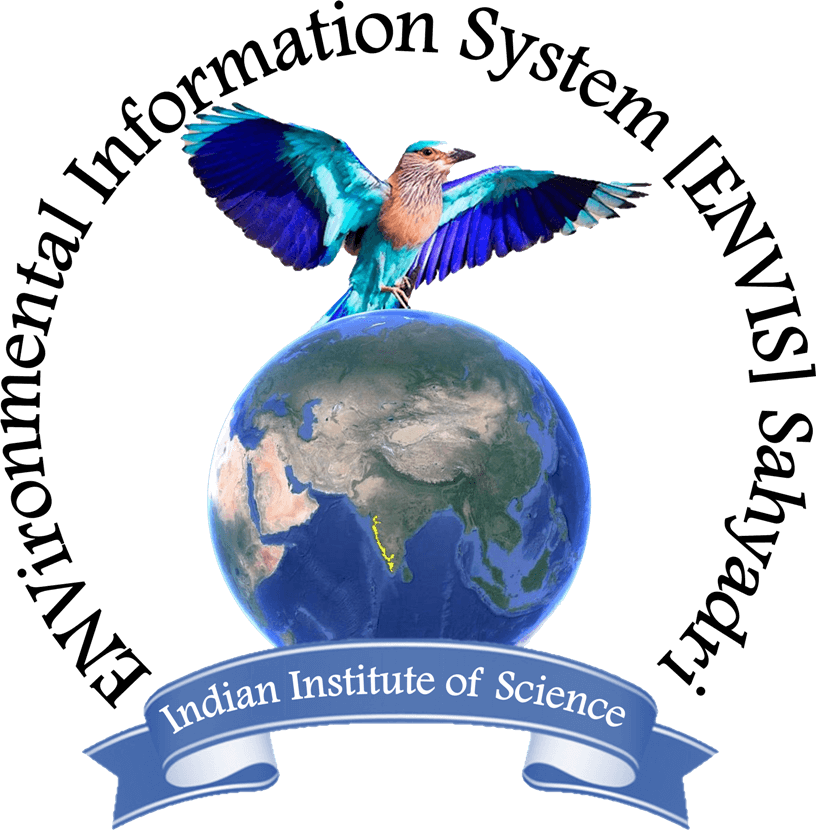Bibliography
- Sabater, S., Stevenson, R.J. Foreword: Global change and river ecosystems—implications for structure, function, and ecosystem services. Hydrobiologia 657, 1–2 (2010).
https://doi.org/10.1007/s10750-010-0463-9
- T V Ramachandra, Vinay S.,Ecohydrological Footprint and Climate Trends in Lotic Ecosystems of Central Western Ghats, Water, (2023)
https://doi.org/10.3390/w15183169
- Mutz, M., Elosegi, A. & Piégay, H. Preface: physical template and river ecosystem functioning: interdisciplinary feedbacks for improving rivers. Hydrobiologia 712, 1–4 (2013).
https://doi.org/10.1007/s10750-013-1507-8
- Chibana, T. (2008). Urban River Management: Harmonizing River Ecosystem Conservation. In: Hanaki, K. (eds) Urban Environmental Management and Technology. cSUR-UT Series: Library for Sustainable Urban Regeneration, vol 1. Springer, Tokyo.
https://doi.org/10.1007/978-4-431-78397-8_3
- T V Ramachandra, Vinay S.Dr. Bharath H.A.(2016)Environmental Flow Assessment in a Lotic Ecosystem of Central Western Ghats, India – Yettinahole, Hydrology Current Research
https://www.researchgate.net/publication/308106425_Environmental_Flow_Assessment_in_a_Lotic_Ecosystem_of_Central_Western_Ghats_India_-_Yettinahole
- Sharma, S., Nautiyal, R., Nautiyal, P. (2018). Diatom Flora in Natural and Regulated Stretch of River Tons and Yamuna: Determining the Impacts of Hydropower Projects on the River Ecosystem. In: Siddiqui, N., Tauseef, S., Bansal, K. (eds) Advances in Health and Environment Safety. Springer Transactions in Civil and Environmental Engineering. Springer, Singapore.
https://doi.org/10.1007/978-981-10-7122-5_8
- Gladyshev, M.I., Sushchik, N.N., Makhutova, O.N. et al. Trophic fractionation of isotope composition of polyunsaturated fatty acids in the trophic chain of a river ecosystem. DoklBiochemBiophys 454, 4–5 (2014).
https://doi.org/10.1134/S1607672914010025
- Yamada, M., Honda, H., Mishima, T., Ohsawa, S., Shoji, J. (2018). Tradeoff Between Hot spring Use and River Ecosystem: The Case of Beppu City, Oita Prefecture, Japan. In: Endo, A., Oh, T. (eds) The Water-Energy-Food Nexus. Global Environmental Studies. Springer, Singapore.
https://doi.org/10.1007/978-981-10-7383-0_10
- Fleckenstein, J. Direct measurement of cadmium, lead, copper and zinc in samples from a river ecosystem by Zeeman Atomic Absorption Spectrometry (ZAAS) in the graphite furnace. Z. Anal. Chem. 328, 396–399 (1987).
https://doi.org/10.1007/PL00020630
- Yu, F., Fang, G., Cao, Y. (2009). Study on Evaluation Index and Methods of River Ecosystem Health. In: Advances in Water Resources and Hydraulic Engineering. Springer, Berlin, Heidelberg.
https://doi.org/10.1007/978-3-540-89465-0_69
- Levshina, S.I., Efimov, N.N. & Bazarkin, V.N. Assessment of the Amur River Ecosystem Pollution with Benzene and Its Derivatives Caused by an Accident at the Chemical Plant in Jilin City, China. Bull Environ Contam Toxicol 83, 776–779 (2009).
https://doi.org/10.1007/s00128-009-9798-1
- T. V. Ramachandra, Bharath S., S. Vinay, Ecological Sustainability of Riverine Ecosystems in CentralWestern Ghats. J Biodiversity, 9(1-2): 25-42 (2018).
https://wgbis.ces.iisc.ac.in/energy/water/paper/Ecological%20sustainability/JBD-09-1-025-18-078-Ramachandra-T-V-Tx[3].pmd.pdf
- Górniak, A. et al. (2019). Innovative Rotor of Water Turbine Save for River Ecosystem. In: RusiÅ„ski, E., Pietrusiak, D. (eds) Proceedings of the 14th International Scientific Conference: Computer Aided Engineering. CAE 2018. Lecture Notes in Mechanical Engineering. Springer, Cham.
https://doi.org/10.1007/978-3-030-04975-1_27
- Mishra, A.S., Nautiyal, P. Substratum as Determining Factor for the Distribution of Benthic Macroinvertebrate Fauna in a River Ecosystem. Proc. Natl. Acad. Sci., India, Sect. B Biol. Sci. 86, 735–742 (2016)
https://doi.org/10.1007/s40011-015-0520-2
- Goethals, P., Dedecker, A., Gabriels, W., Pauw, N.D. (2003). Development and Application of Predictive River Ecosystem Models Based on Classification Trees and Artificial Neural Networks. In: Recknagel, F. (eds) Ecological Informatics. Springer, Berlin, Heidelberg.
https://doi.org/10.1007/978-3-662-05150-4_6
- Matsui, A. (2022). Survey of the River Ecosystem Downstream of a Dam. In: Wetland Development in Paddy Fields and Disaster Management. Springer, Singapore.
https://doi.org/10.1007/978-981-19-3735-4_8
- Bhutiani, R., Khanna, D.R., Kulkarni, D.B. et al. Assessment of Ganga river ecosystem at Haridwar, Uttarakhand, India with reference to water quality indices. Appl Water Sci 6, 107–113 (2016).
https://doi.org/10.1007/s13201-014-0206-6
- Krishnamurthy, P., Krishnamurthy, K.V. Report on the National Symposium on ‘Resilient River Ecosystem: Indigenous Knowledge and Modern Approaches’, 18th & 19th February, 2023 at the Art of Living (AOL) International Centre, Bangalore. J Geol Soc India 99, 584–587 (2023).
https://doi.org/10.1007/s12594-023-2349-2
- Brown, L.E., Milner, A.M. & Hannah, D.M. Predicting river ecosystem response to glacial meltwater dynamics: a case study of quantitative water sourcing and glaciality index approaches. Aquat. Sci. 72, 325–334 (2010).
https://doi.org/10.1007/s00027-010-0138-7
- Ramachandra, T.V. Integrated Ecological Carrying Capacity of Uttara Kannada District, Karnataka; Sahyadri Conservation Series 47; ENVIS Technical Report 87; Indian Institute of Science: Bangalore, India, 2014.
https://wgbis.ces.iisc.ac.in/energy/lake2014/proceedings/1_TVR_lake2014_30DEc14.pdf
- Ramachandra, T.V.; Vinay, S.; Bharath, S.; Subash Chandran, M.D.; Bharath, H.A. Eco-Hydrological Footprint of Sharavathi River Basin. 22–25 November 2018,
https://www.researchgate.net/publication/340978463_HYDRO-ECOLOGICAL_FOOTPRINT_OF_SHARAVATHI_RIVER_BASIN
- Vinay, S.; Vishnu, D.M.; Srikanth, N.; Chandran, M.D.S.; Bharath, S.; Shashishankar, A.; Ramachandra, T.V. Landscapes and Hydrological Regime Linkages: Case Study of Chandiholé, Aghanashini. In Proceedings of National Seminar for Research Scholars, Coimbatore; Indian Institute of Science: Bangalore, India, 2017.
https://www.researchgate.net/profile/Bharath-Setturu/publication/318653180_LANDSCAPES_AND_HYDROLOGICAL_REGIME_LINKAGES_CASE_STUDY_OF_CHANDIHOLE_AGHANASHINI.pdf
- Zheng, L., Liu, H., Huang, Y. et al. Assessment and analysis of ecosystem services value along the Yangtze River under the background of the Yangtze River protection strategy. J. Geogr. Sci. 30, 553–568 (2020).
https://doi.org/10.1007/s11442-020-1742-7
- Ge, Q., Xu, W., Fu, M. et al. Ecosystem service values of gardens in the Yellow River Basin, China. J. Arid Land 14, 284–296 (2022).
https://doi.org/10.1007/s40333-022-0061-5
- Zhou, R., Lin, M., Gong, J. et al. Spatiotemporal heterogeneity and influencing mechanism of ecosystem services in the Pearl River Delta from the perspective of LUCC. J. Geogr. Sci. 29, 831–845 (2019)
https://doi.org/10.1007/s11442-019-1631-0
- Bhadra, T., Mukhopadhyay, A., Hazra, S. (2017). Identification of River Discontinuity Using Geo-Informatics to Improve Freshwater Flow and Ecosystem Services in Indian Sundarban Delta. In: Hazra, S., Mukhopadhyay, A., Ghosh, A., Mitra, D., Dadhwal, V. (eds) Environment and Earth Observation. Springer Remote Sensing/Photogrammetry. Springer, Cham.
https://doi.org/10.1007/978-3-319-46010-9_10
- Guo, B., Zhou, Y., Zhu, J. et al. Spatial patterns of ecosystem vulnerability changes during 2001–2011 in the three-river source region of the Qinghai-Tibetan Plateau, China. J. Arid Land 8, 23–35 (2016).
https://doi.org/10.1007/s40333-015-0055-7
- Tillie, N. (2020). From Urban Green Structure to Tidal River in Rotterdam: Testing Grounds for Urban Ecology. In: Roggema, R. (eds) Nature Driven Urbanism. Contemporary Urban Design Thinking. Springer, Cham.
https://doi.org/10.1007/978-3-030-26717-9_6
- Ye, X., Xu, CY., Li, Y. et al. Change of annual extreme water levels and correlation with river discharges in the middle-lower Yangtze River: Characteristics and possible affecting factors. Chin. Geogr. Sci. 27, 325–336 (2017).
https://doi.org/10.1007/s11769-017-0866-x
- Wang, F., Ge, Q., Yu, Q. et al. Impacts of land-use and land-cover changes on river runoff in Yellow River basin for period of 1956–2012. Chin. Geogr. Sci. 27, 13–24 (2017)
https://doi.org/10.1007/s11769-017-0843-3
- Sabater, S., Bregoli, F., Acuña, V. et al. Effects of human-driven water stress on river ecosystems: a meta-analysis. Sci Rep 8, 11462 (2018).
https://doi.org/10.1038/s41598-018-29807-7

